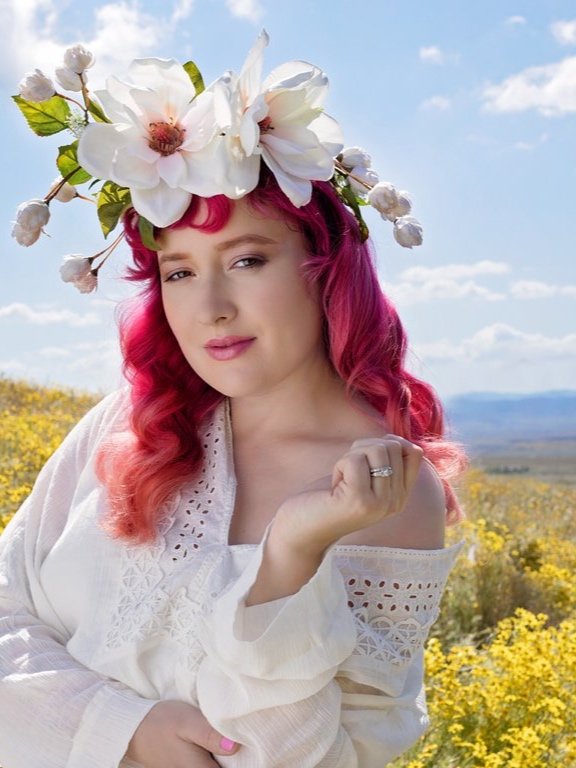The Nosh Pit: What Happens When Veggies, Humans, and Entertainment Collide
PHOTOS BY DYLAN HONEA-BAUMANN Thursday night lights: How an experimental market became SLO’s behemoth downtown draw. This cover story ran in SLO New Times June 6, 2016.
White-haired and clear-eyed, Ruth “The Flower Lady” Scovell has seen her fair share of marriage proposals. That is, they happen to unfold right in front of her, on the fated patch of Higuera Street located directly in front of her table at the Downtown SLO’s Thursday Night Farmers’ Market.
She’s been here, rain or shine, for 36 long years.
Scovell says she started off as the “walnut lady,” but people change. How could she resist? The daffodils and sweet peas grew between her Atascadero orchard rows like clockwork. With the fresh cut flowers came an unusual result. Guys started falling down on one knee.
Throngs of market-goers usually passed by the scene unaware of this life changing moment happening in front of her stand, their hands full of sticky barbecued ribs or buttery corn on the cob.
“Men will still buy one of my bouquets and propose right there,” Scovell says with a big belly laugh that rises above the frenzied murmur of a late April Downtown Farmers’ Market. “It still shocks the life out of me.”
Much has changed since “Thursday Night Activities” began in earnest back in 1983: the price of beef ribs; the name and girth of the event; and many of the players, both human and vegetable. Heck, arugula was deemed “exotic” back in the early ’90s. Now, you can find all manner of kale, micro greens—even locally sourced rockfish and rabbit. Handcrafted artisanal salami? You’ll find it wedged between a youth dance troop bouncing around in sequined outfits and a booth peddling locally made Whalebird Kombucha. In the coming months, expect to see free WiFi and beer and wine tasting.
Of course, a bird’s eye view shows the most awe-inspiring change of all. During peak season—the spring and summer months—approximately 15,000 visitors flood downtown to shop from 30 to 40 farmers, watch live entertainment, and explore 70-plus vendors ranging from goat cheese to handmade lavender soap.
Still, some things never change. And I’m not just talking about the Lord of the Cello, who plays every week in gothic medieval battle armor, long hair blowing in the wind.
Like fragrant smoke wafting from the market’s famed barbecues, one truth lingers on. From behind each booth, barbecue, and reusable cloth bag, there is a story.
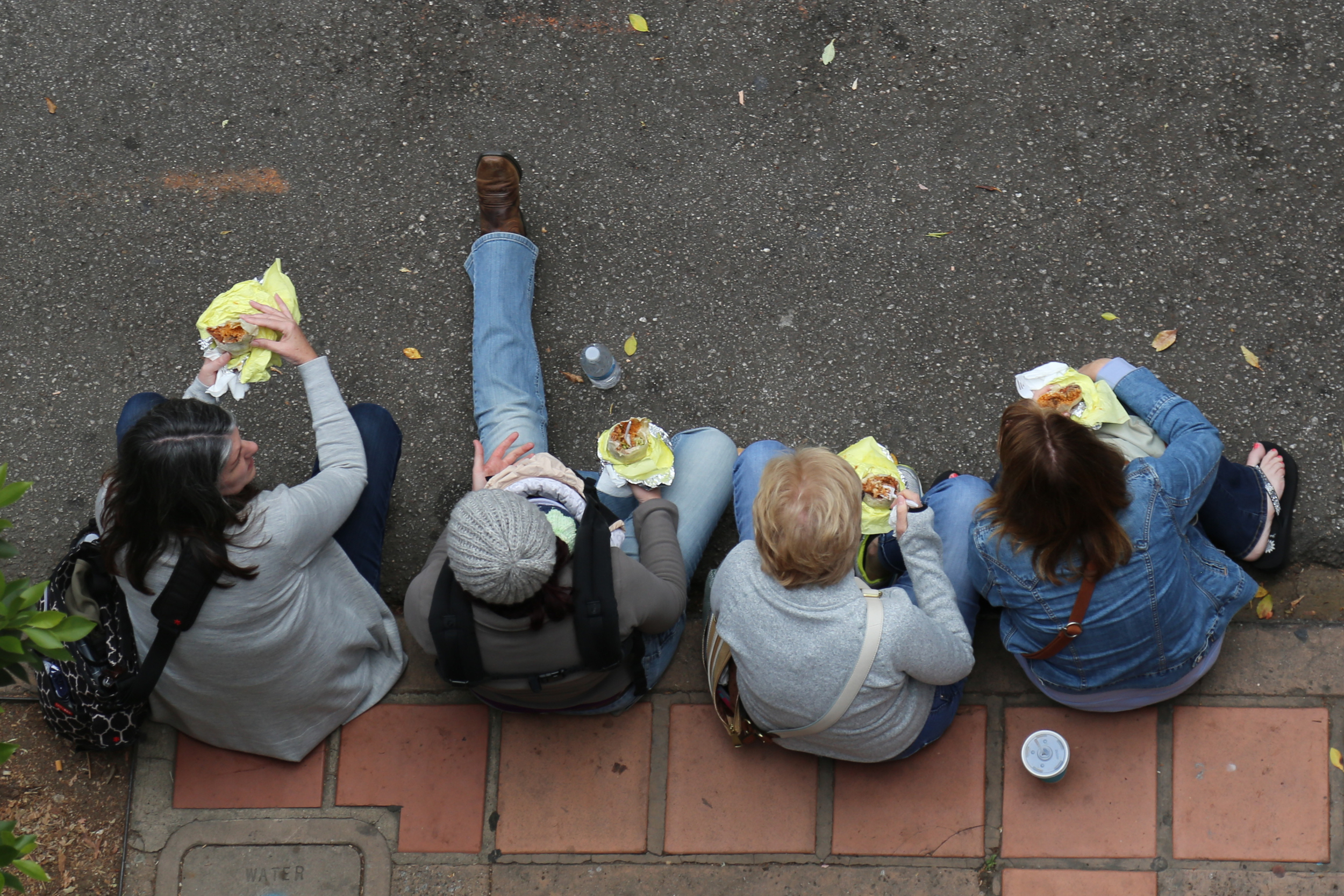
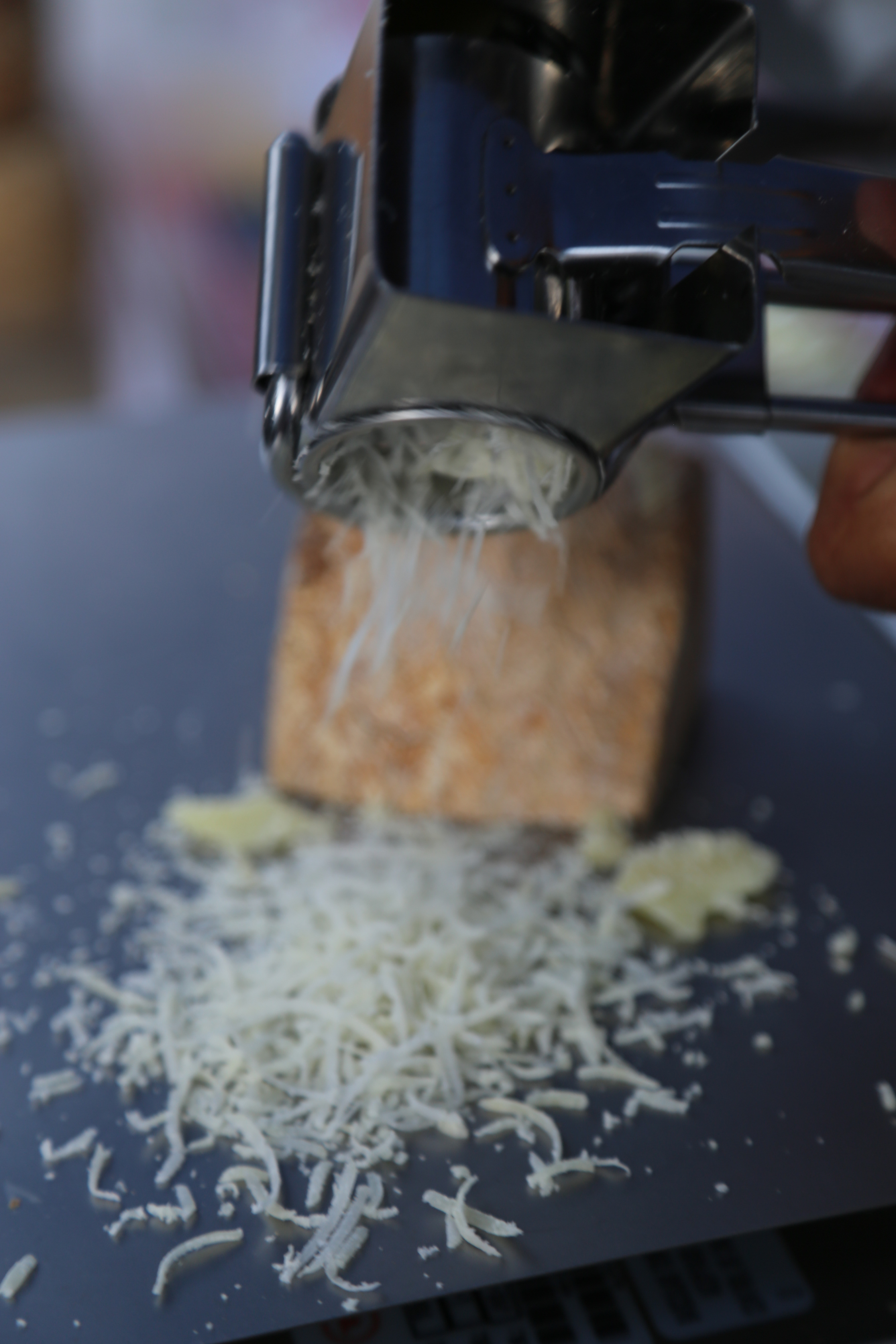
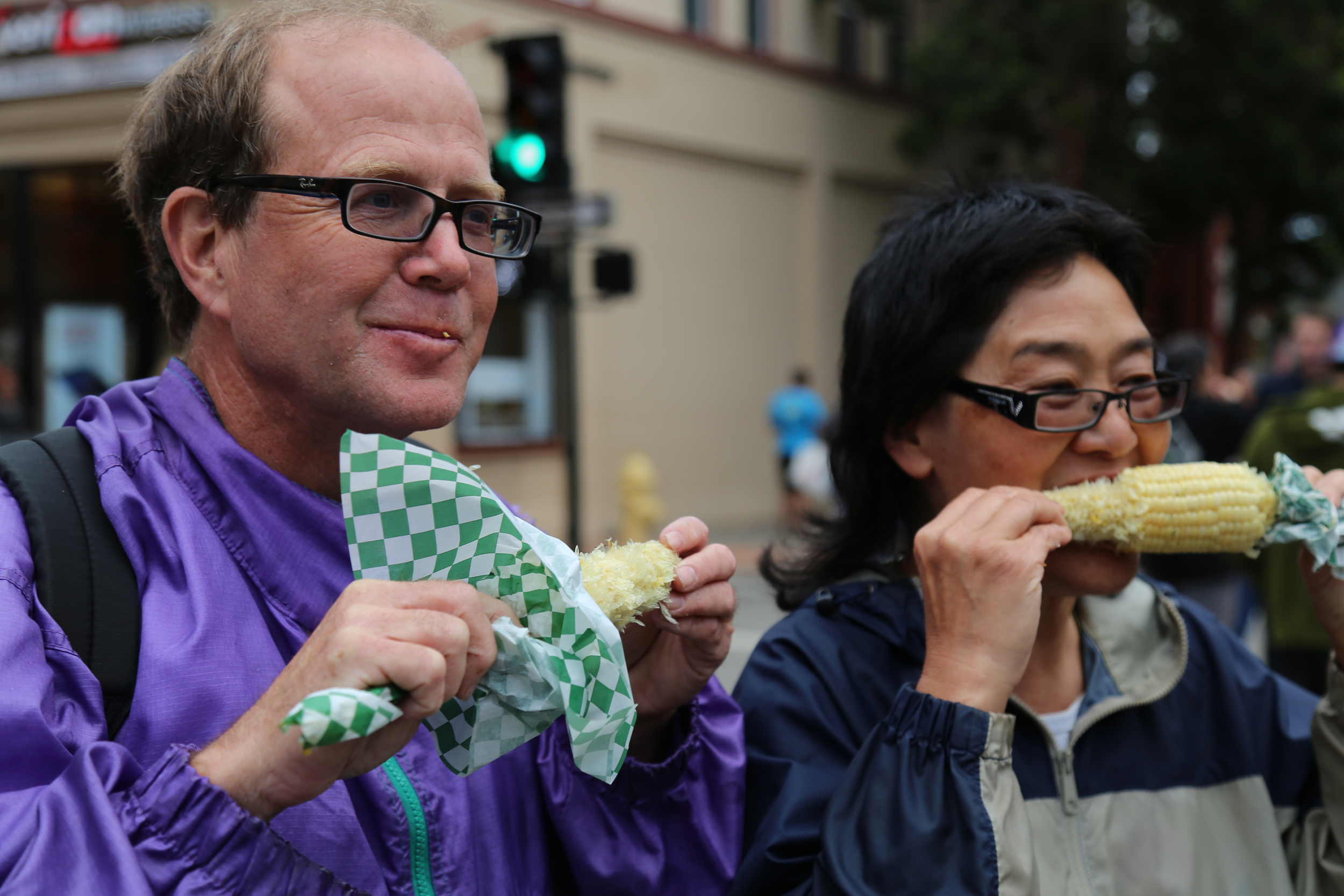
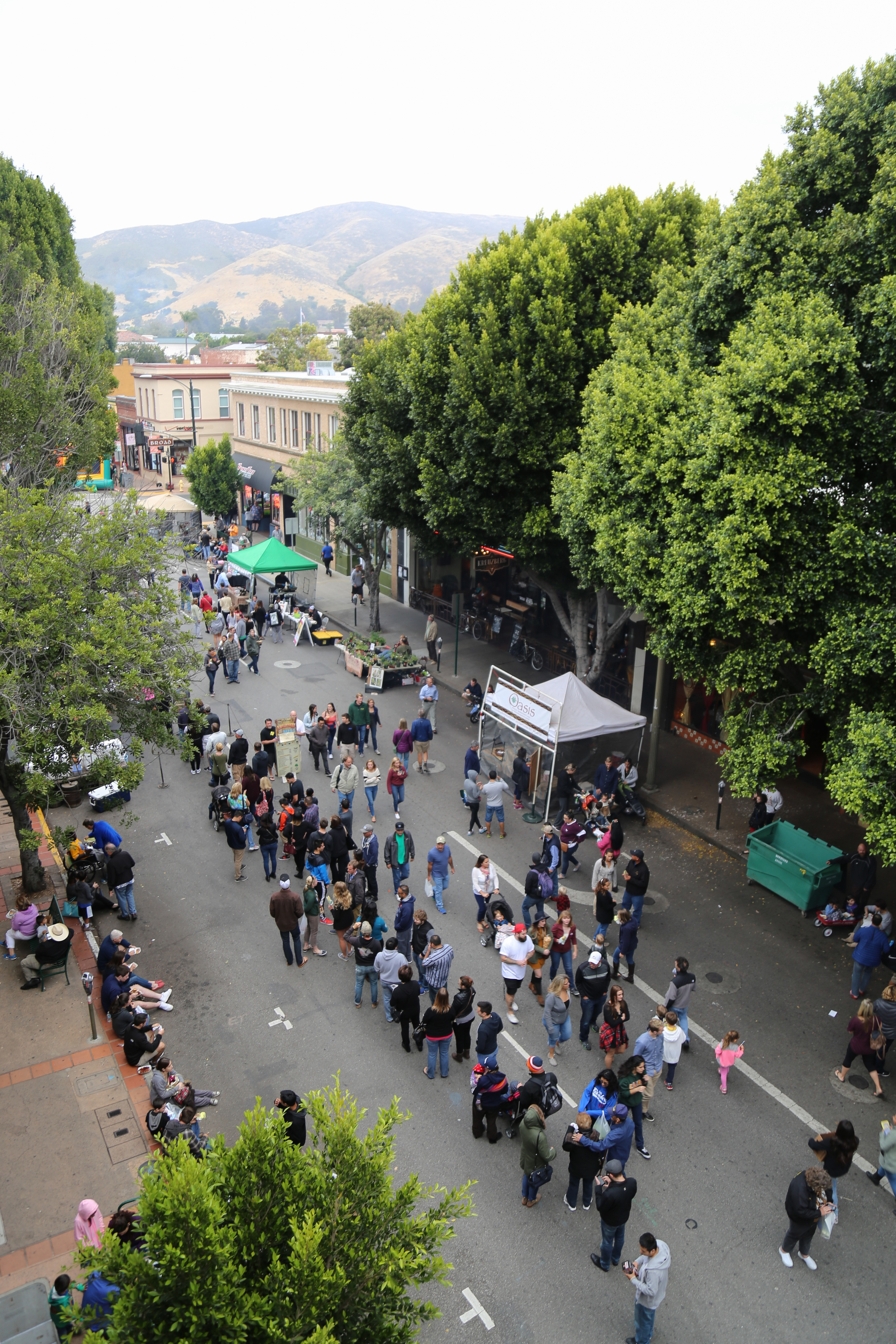
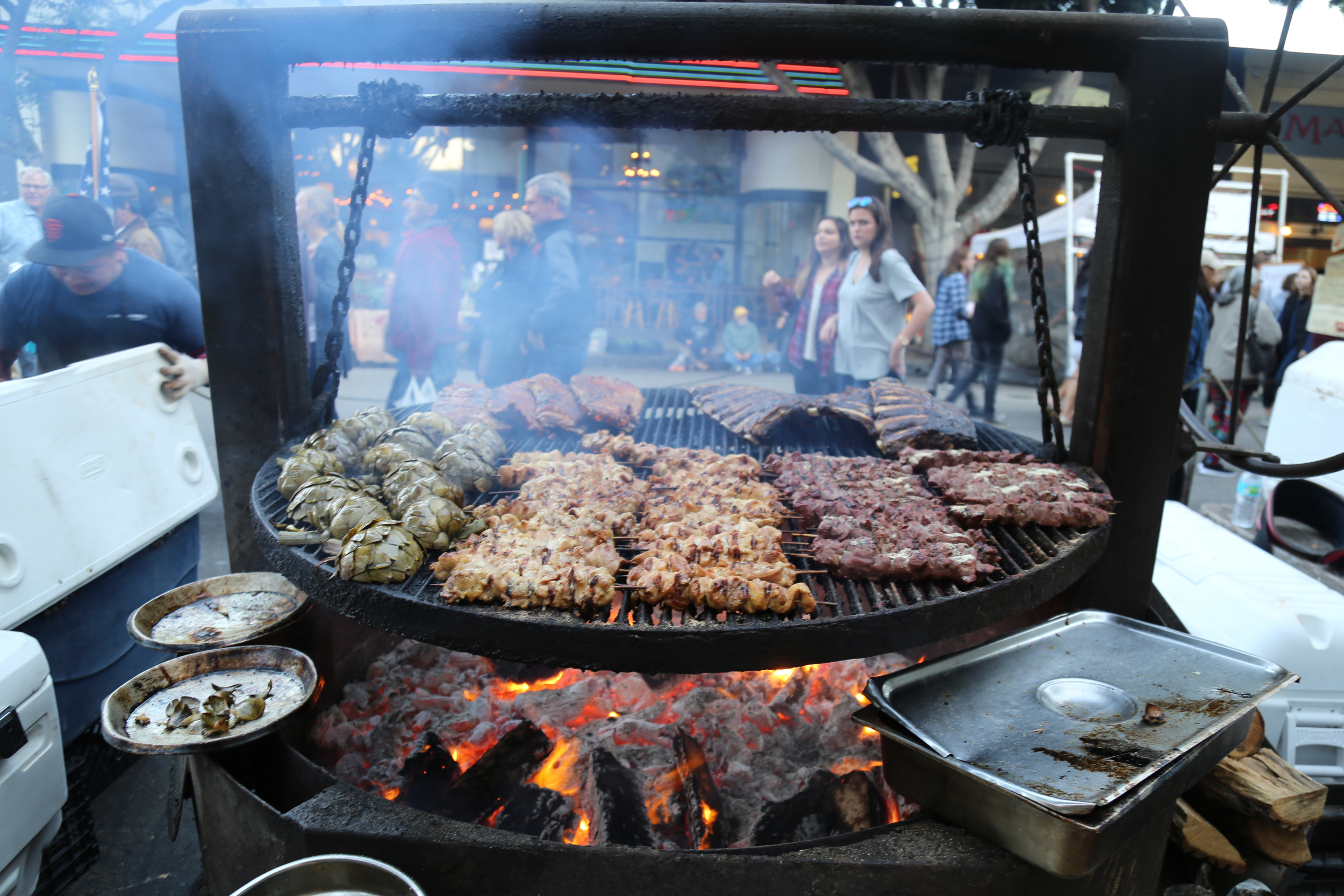
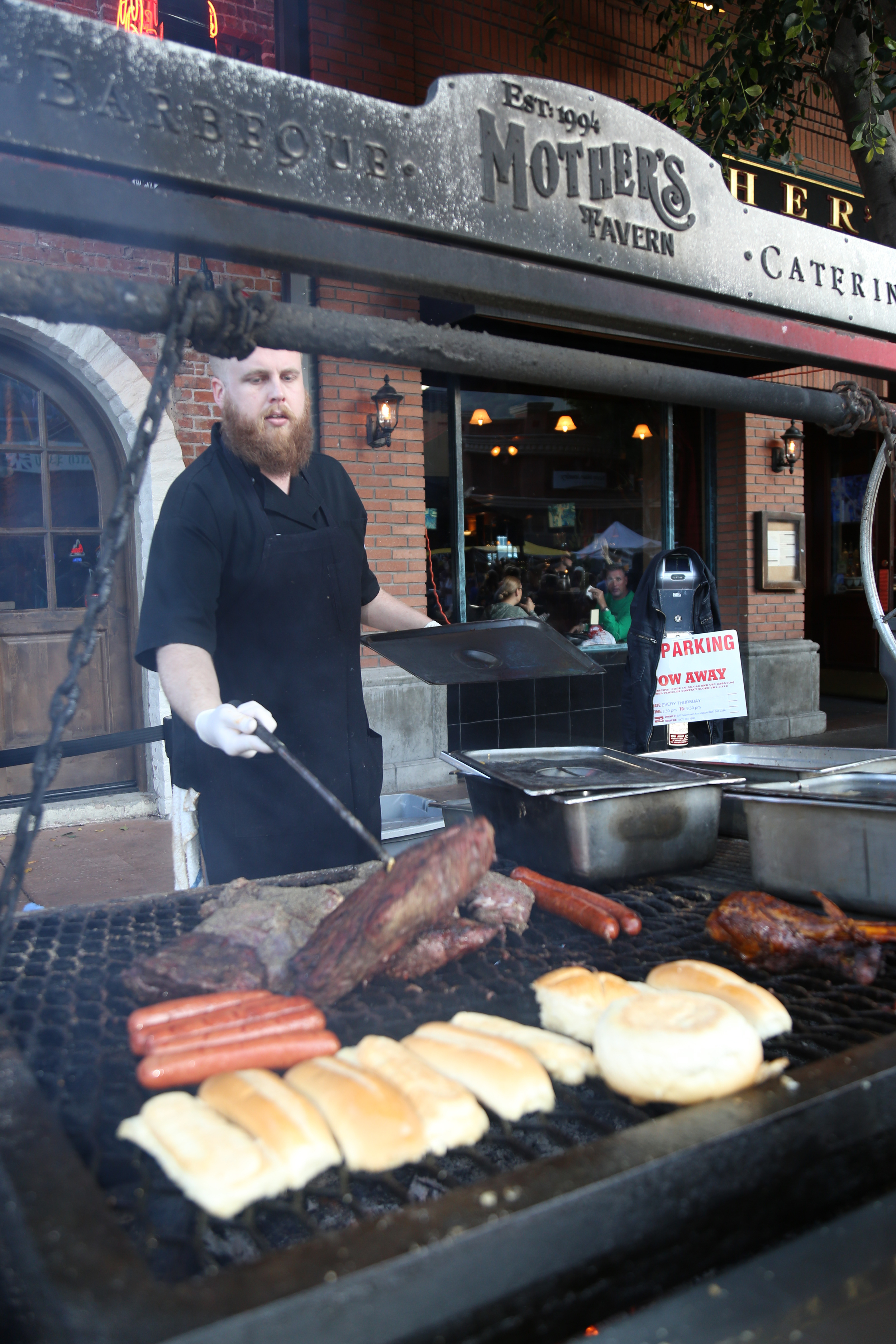
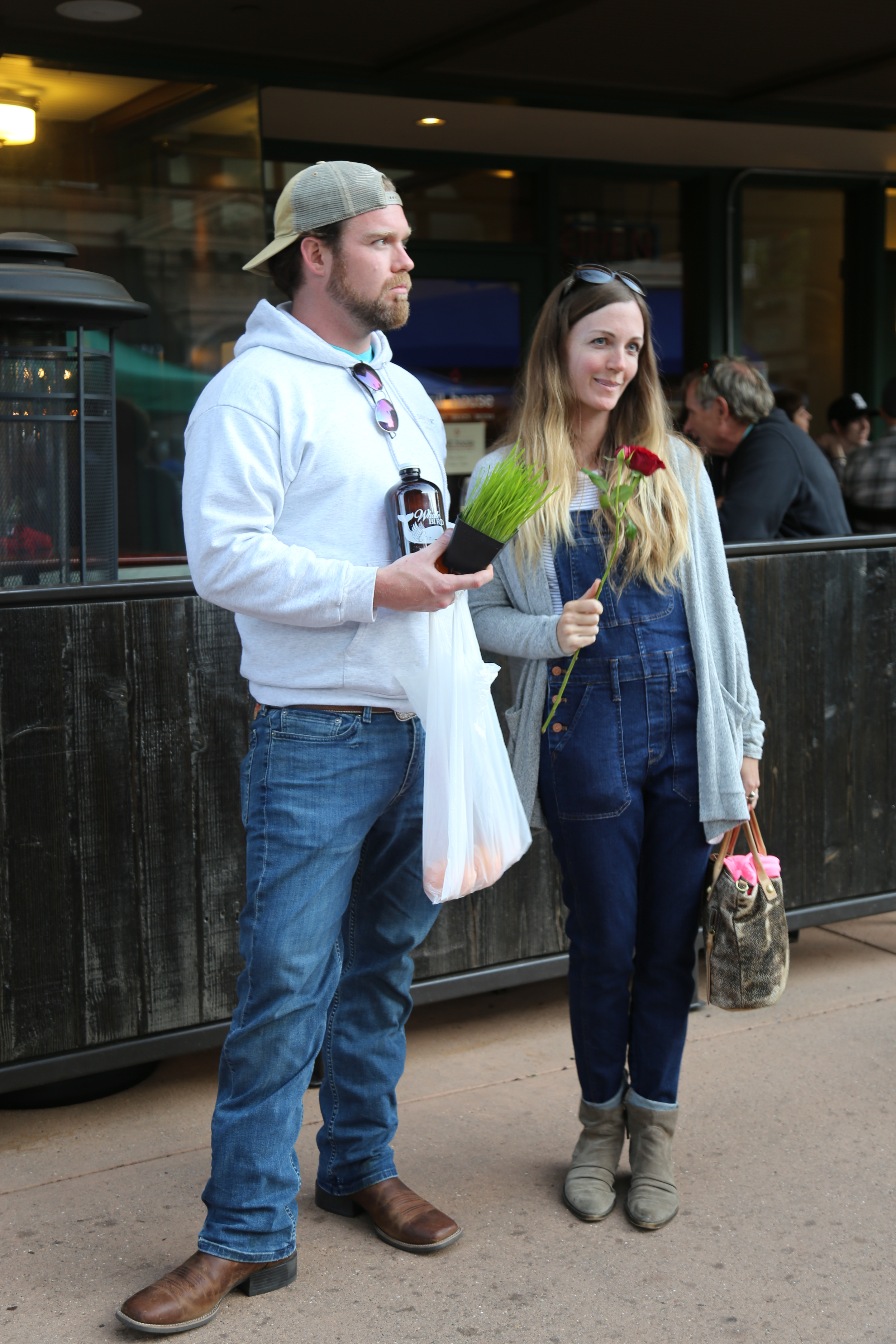
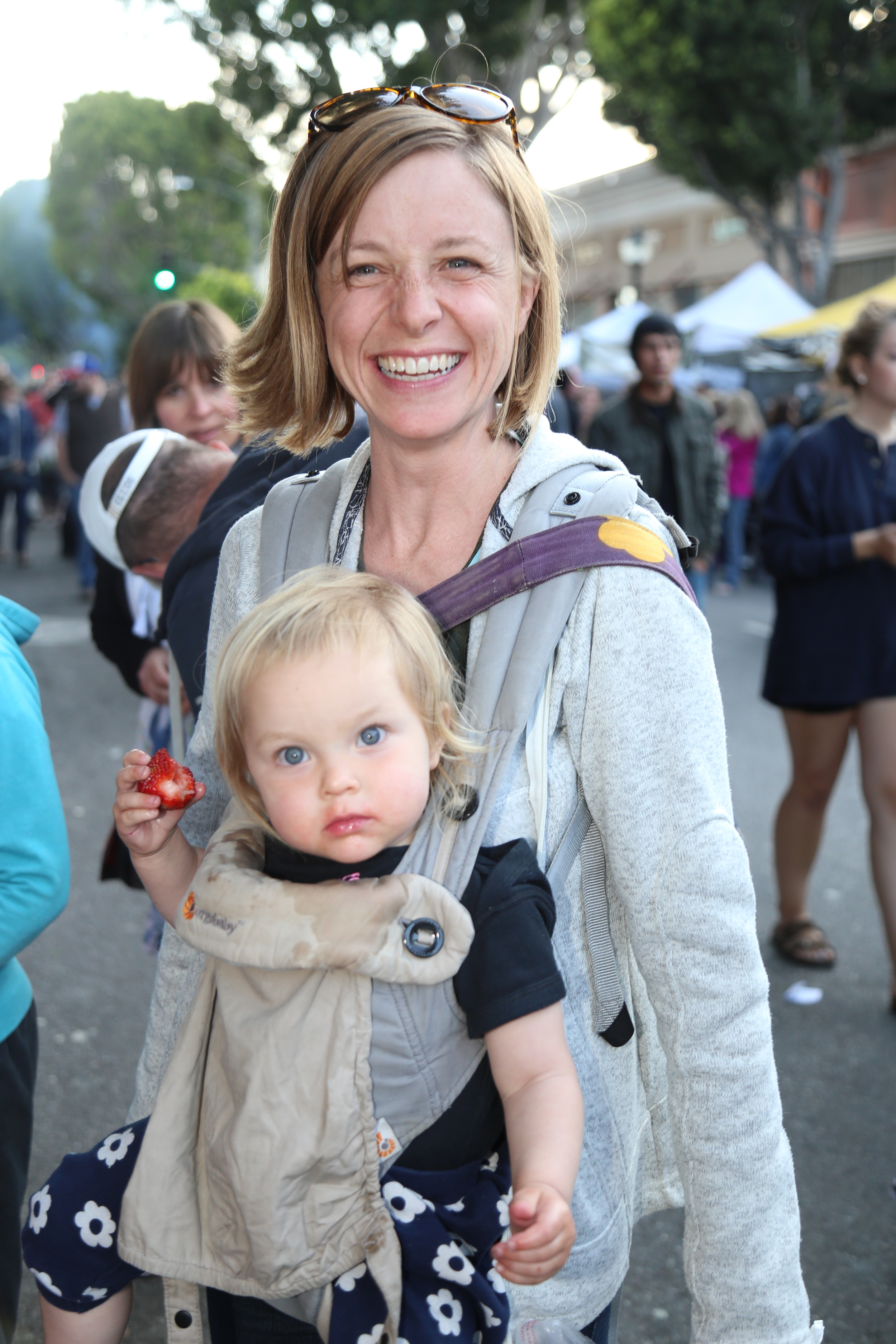
Cruise culture
The year is 1983. McDonald’s has just introduced a processed wonder called the Chicken McNugget. Margarine is in and real butter is out. It not all bad, though. Small farmers had recently become empowered in California.
Five years prior, legislation had finally been passed that allowed small-to-medium-sized farmers in the Golden State to sell their goods directly to the public.
This spurred on two of the first certified farmers’ markets in SLO County: Thursdays in the parking lot of Young’s Giant Foods, located on Broad Street, where Stanley Motors is today; and Saturdays at a second Young’s location in Morro Bay, where Spencer’s Fresh Market now stands. They were popular enough, but far from “world famous.”
Then, came the big one.
When Thursday Night Activities began quietly on a summer night in 1983, no one could have known how vast, how dynamic, it would become. So, why did it? The old timers will tell you it had a lot to do with hair spray and hot rods.
Back then, if you walked downtown between the hours of 6 and 9 p.m. you would see a gasoline-soaked mating ritual. Youth were “cruising” downtown. High school and college kids didn’t have emojis or Facebook. Instead, they hollered out of their gurgling trucks, “Hey babe. We got beer!”
Has much really changed since then?
Ralph Johnson of Jr. Johnson Biodynamic Organic Farm in San Luis Obispo thinks so. He’s been farming for 30 years, and his involvement with SLO farmer’s markets began in the late ’70s, when he helped a friend with a Cal Poly corn project. Surrounded by heirloom lettuce and seedlings, he tells me how he and his buddy brought the excess cobs to the market hoping to make a few bucks.
“We made some money for rent, and we had fun doing it, too,” Johnson says. To this day, the farmer maintains that shoppers should be having fun. However, there is a line that can be crossed.
“Before we had [the Downtown Farmers’ Market], kids would be driving slow up and down Higuera and Marsh Street in circles, socializing, showing off their rigs,” Johnson says. “On Halloween, you wouldn’t dare drive Higuera ‘cause you’d get egged.”
Naturally, downtown businesses weren’t thrilled.
“This was, and still is, a conservative neighborhood. If you’re not part of the good old boys’ club, you can’t have that kind of thing going on,” Johnson says.
In the eyes of the SLO Business Improvement Association (known today as the Downtown SLO Association), the problem was two-fold. First, there were those wild college students causing a ruckus. Second, there was urban sprawl and the rise of shopping malls, which had sucked the lifeblood from downtown.
Peter Jankay has served as Executive Director of the SLO County Farmer’s Market Association since 1985. He remembers this bleak time in downtown history clearly. The association blocked off the street to curb cruising. Shops stayed open late on Thursday nights and even wheeled racks of clothing and wares onto the sidewalk. It was a ghost town.
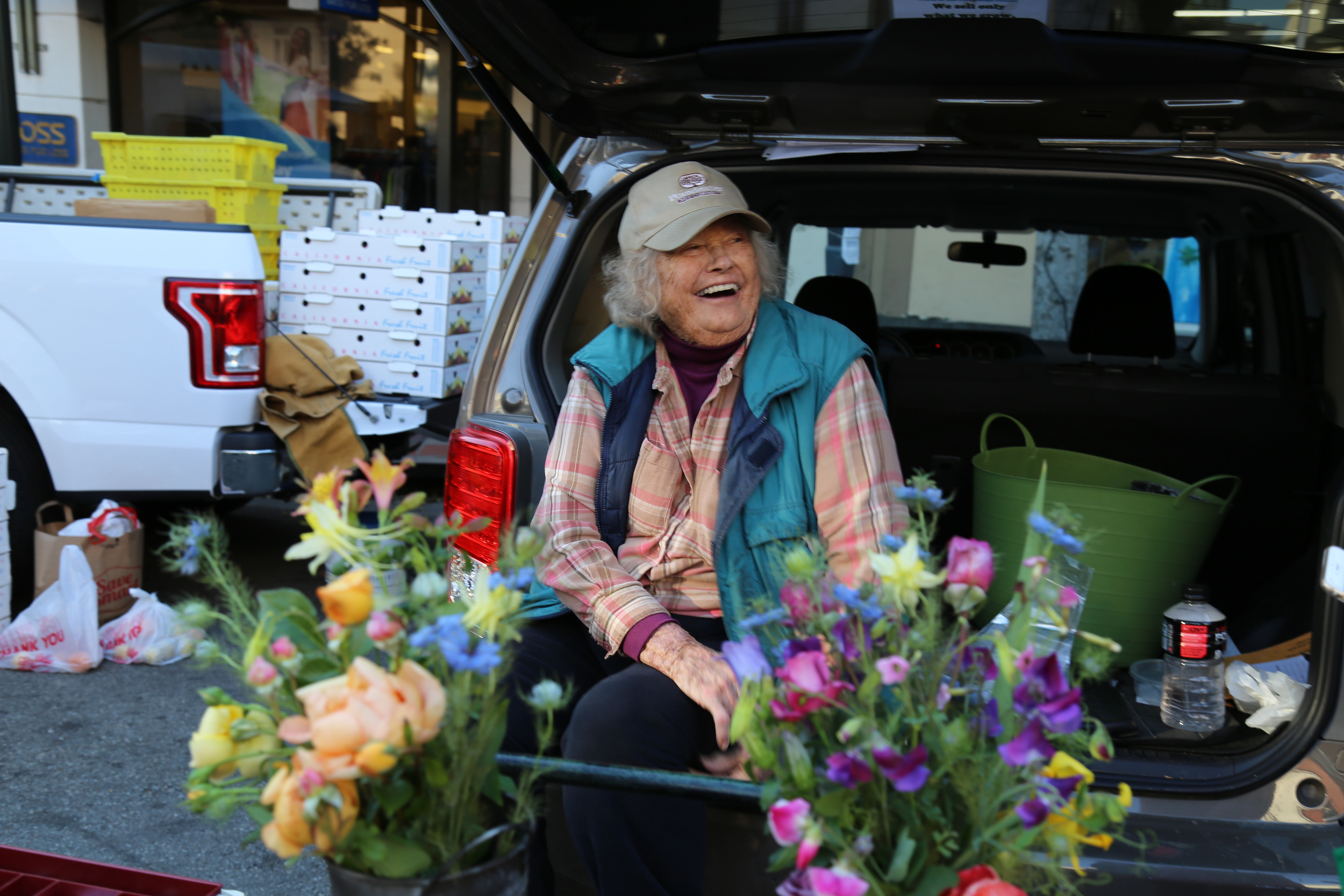
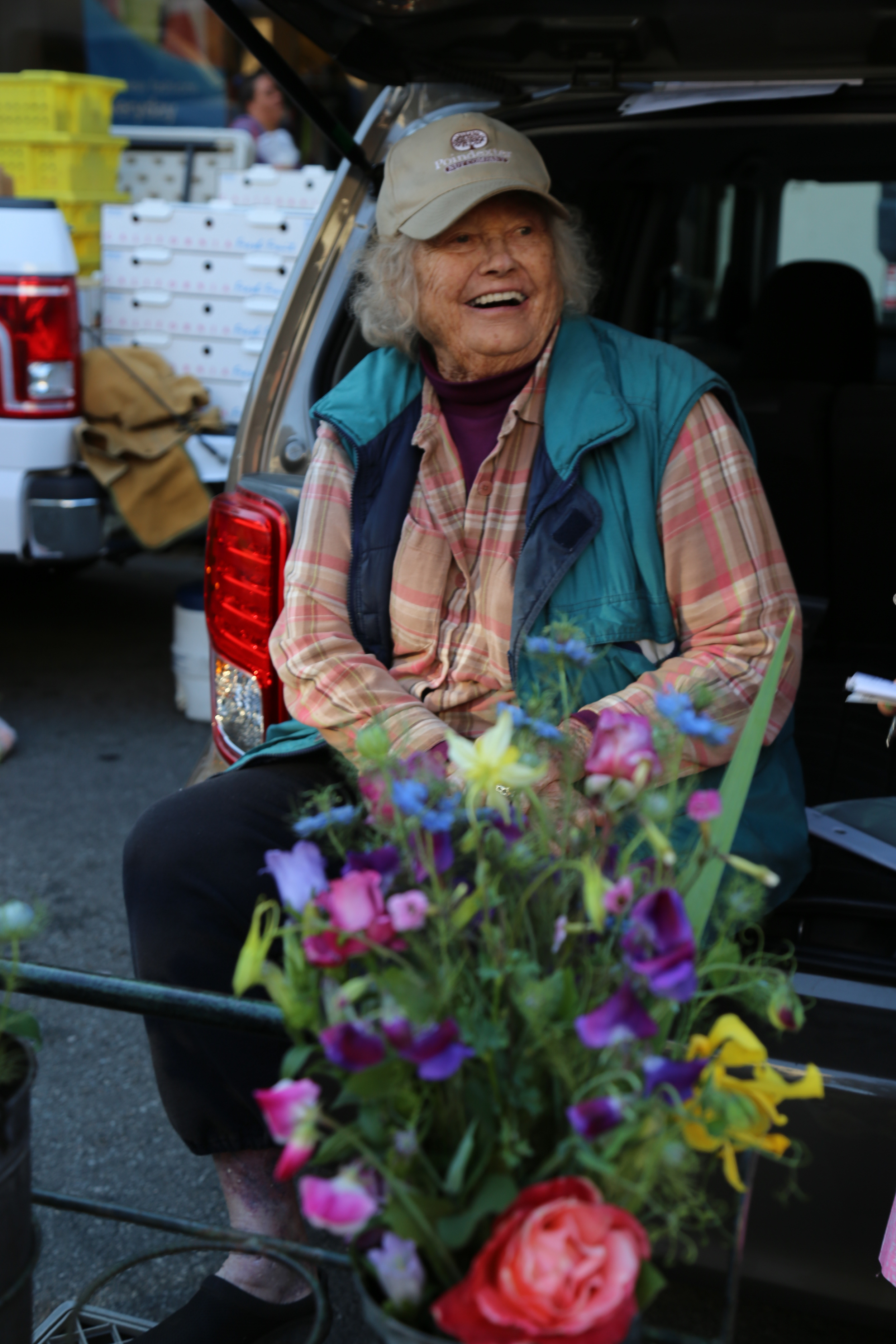
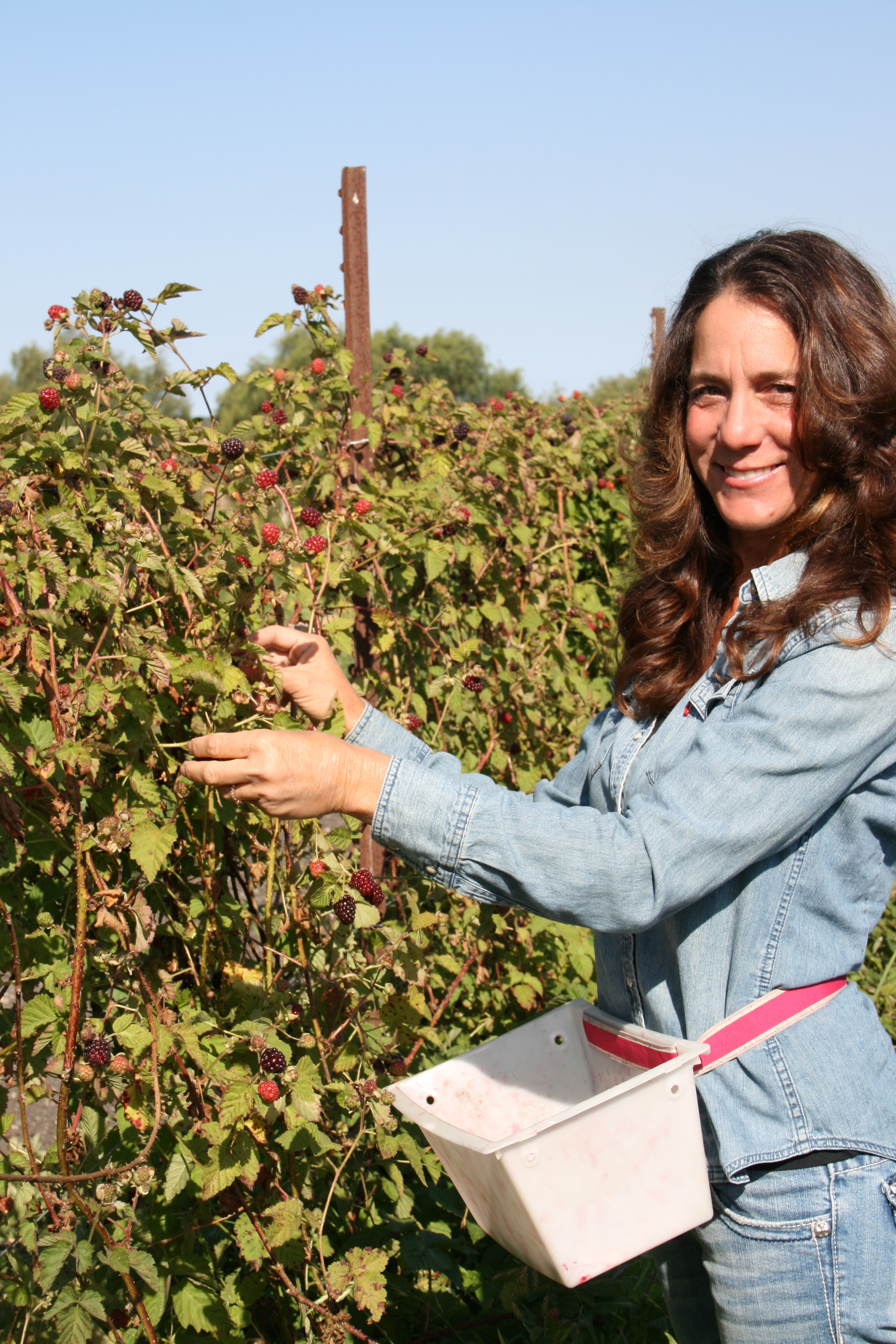
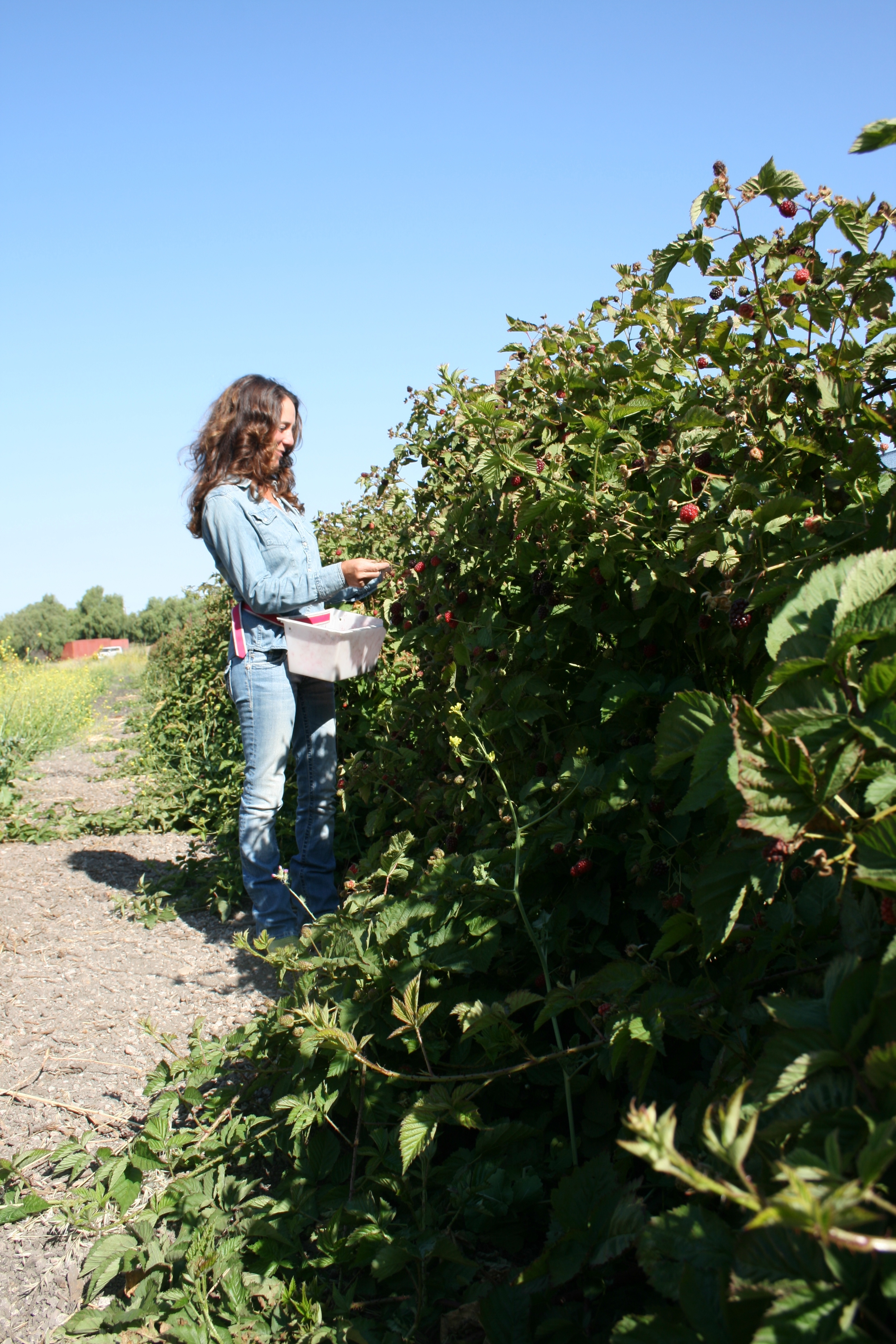
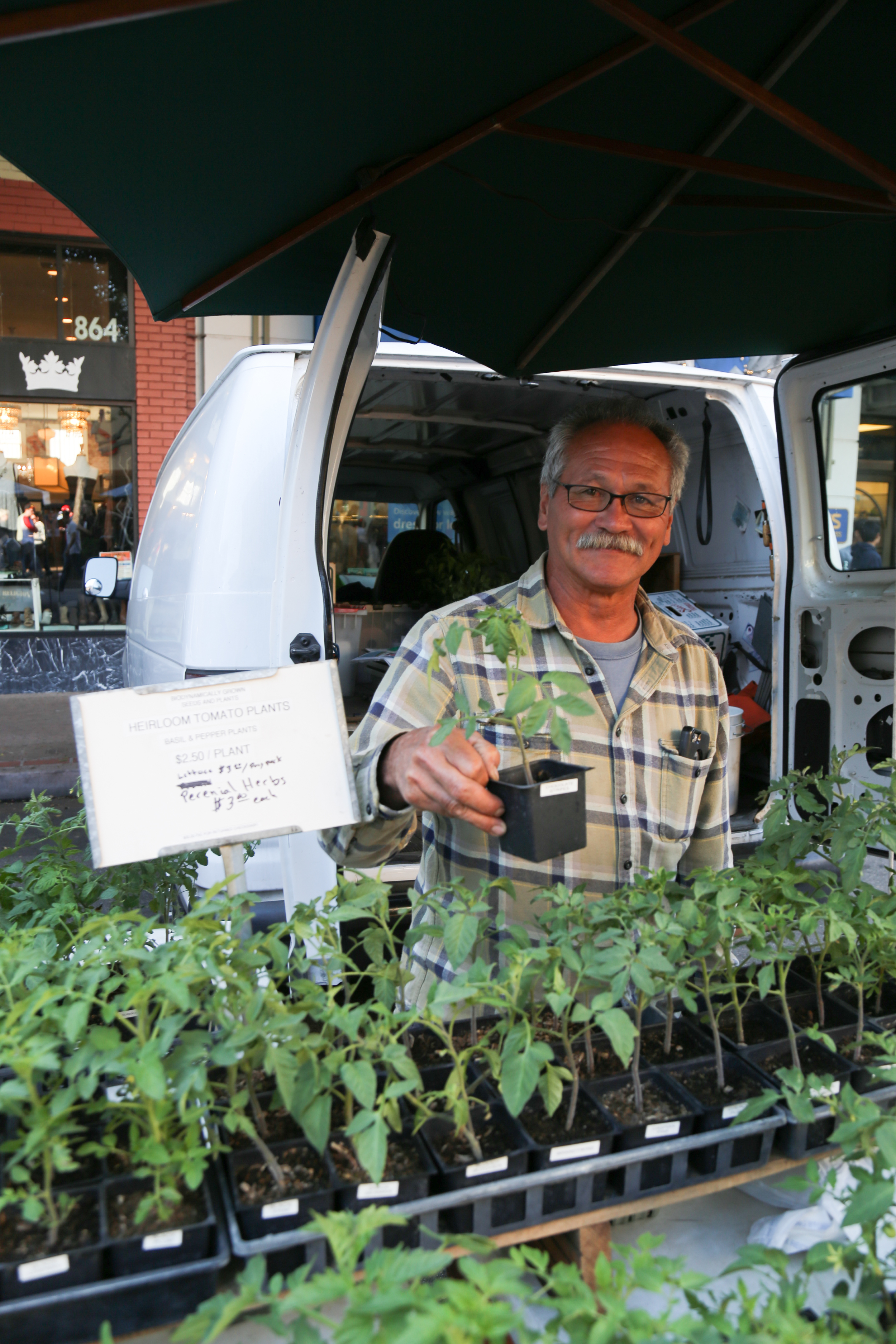
The call
It all came from the shrill brrring of a rotary phone. On the other end was a representative from the SLO Business Improvement Association with a proposition just crazy enough to work.
What if the association could combine a farmers’ market and barbecue with a Thursday night community event?
Jankay says John and Charlotte Turner, founders of the first farmers’ markets in SLO, heeded that call.
“The Turners thought this would be good for the association as well as the farmers because it would provide them with two markets in the same day, Morro Bay and SLO,” Jankay says.
We’re sitting outside of Black Horse Coffee downtown, just a block away from where so many Thursday night dreams have come and gone.
“If we had set up the farmers’ market by ourselves, who knows if it would have been successful,” Jankay explains. “But when we joined together downtown, it all of a sudden just exploded. There were several levels: One, the local business people; two, the farmers’ market; and three, the community activities and information. If you had any of the two, it wouldn’t have gone as far and as fast as it did. That third element, it created critical mass. It became important.”
These days, you can find groups representing Atheists United and the Gay and Lesbian Alliance alongside American Agri-Women and Elevate Christian Church.
“From the beginning, it didn’t matter if you were a Republican or an atheist or a Democrat or a Muslim,” Jankay says. “The fact was that all people were allowed in.”
Vendors and nonprofits may have evolved, but many of the farmers’ faces haven’t. About 75 percent are from SLO and Santa Barbara counties; the remainder travel from the valley and beyond.
“At least half of them have been with us for at least 25 to 30 years,” Jankay says, adding that he’s watched kids grow up and continue working the market. “What does that mean to me? That’s family.”
Of course, now there’s so much more than fresh produce. Bounce houses; a STEAM alley promoting science, tech, engineering, arts, and math; fringe craftspeople like Live Local Apparel’s Phillip Hurst, who makes line drawn T-shirts showcasing the iconic symbols of SLO. There are unicyclists and chefs, homeless youth slumped against gum alley, and tourists attempting to snap the perfect selfie against the rainbow of a crusted spit. In a word: There’s a cacophony of humanity.
How did we get here? How did we get to a point where other cities reach out to SLO in an effort to replicate the popular destination? I followed my nose to a farmers’ constant—the iconic barbecue pits—to chew the fat.
What’ll ya have?
When I ask F. McLintock’s Co-Founder and Owner Tunny Ortali what has stayed the same at the Downtown SLO Farmers’ market over the years, he strokes his silver Yosemite Sam mustache and leans back in his leather chair.
His answer? “Not much but the barbecue.”
We’re sitting in the office of the Shell Beach location—one of four he owns with partner and co-founder Bruce Breault. F. McLintock’s provided the very first barbecue to the market, back when it was still called “Thursday Night Activities.” Now the second generation, Tyler Ortali and Toney Breault—who serve as general manager and president of the company, respectively—carry on the weekly tradition.
“It got larger, and with that, comes bureaucracy,” Ortali says. “The farmers’ market has grown into itself, into its own entity.”
Ortali isn’t criticizing the growth of the market by any means (although many did when the Downtown Association opened to it up to non-association members back in 2006).
As a past Thursday Night Promotions Committee member and loyal grill master, Ortali has seen downtown rise from the ashes.
“Montey Mills would play on Thursdays at F. McLintock’s for 25 years. We would have the barbecue and it would flow right into the music and it’d really go off,” Ortali says. “It’s amazing to have seen the sheer number of people come in and how we’ve been able to self-regulate.”
Ortali stopped manning the pit back in 2003, after knee replacement surgery. Up until then, he’d take off his smoky clothes in the garage before entering his house.
See, before there was ever an Osos Street “Harvest Stage,” showcasing music the first Thursday of the month, there was another kind of spectacle: one that you can still witness today.
It all starts at 6 p.m. with a crew of 12 belting out “God Bless America.” This all occurs amid blazing F. McLintock’s barbecue pits piled high with beef and pork ribs, pulled pork, half chickens and more fixings. Until 9 p.m., anyone in a block’s radius can hear the pit-master's old timey refrain: “Whattlyahave? Whattlyahave?”
The market continues to offer a handful of popular barbecues, including Mother’s Tavern, Rib Line, and MO’s—not to mention food booths provided by a slew of local restaurants. Still, Ortali says he’s flabbergasted that not many are selling beef ribs anymore. Due to cost, they’ve shot from $2.50 a rib to $5. Still, as many as 2,000 people have been known to snake around the block down to Broad Street for a taste.
A sect of restaurateurs do grumble about this fact; and indeed, some businesses choose to close during farmers’ due to lack of patronage. Has the market gotten too successful, brought too many people? It all depends on who you ask.
Follow the money
SLO Downtown Association Executive Director Dominic Tartaglia knows the struggle of the small-time farmer intimately. He’s from a farming family himself.
He says about 70 percent of shoppers are probably local residents, although the demographic changes in the summer, when more folks from the Central Valley and SoCal flood into SLO to beat the heat. Locals aren’t looking for a novelty experience. According to Tartaglia, they’re actually filling their fridges for the week.
“When I first started thinking about the market critically, I saw it as a grocery store that didn’t have all of the things that you would expect to find at a super market. Instead, it made up for the absence of meats, fish and grains with great entertainment,” Tartaglia says. “After polling market guests and stakeholders the results confirmed that I wasn’t alone in thinking that our market could do a better job of filling guests baskets like a grocery would.”
At the end of May, Tartaglia ushered in a new tribe of local purveyors, including local beef and barbecue samples from Hearst Ranch, seasonally caught fish, poultry and eggs, fresh local rabbit, cured meats, grains, cheese, and grommet mushrooms.
Tartaglia says supplying local, sustainably sourced goods isn’t just a no brainer in terms of market demand; it’s better for the environment and farmers.
“It seems strange to me that our neighbors are raising grass fed cattle and catching local fish for sale, yet people are buying steaks and fillets at Whole Foods,” he says. “We should be supporting our local agriculturists and bolstering our local economy.”
Direct to consumer
The term “agriculturists” feels flat, so go out in search of flesh and blood. In fertile SLO County, I don’t have to look far. I meet a denim-clad Lori Heal at her father’s Arroyo Grande Farm, Two Peas in a Pod. It’s about 8:30 a.m., very late in the day, indeed.
She, like so many local growers, rises with the sun and rolls up her sleeves before many of us have even slurped our first bleary-eyed cup of coffee. The third generation farmer doesn’t advertise Two Peas in a Pod or her popular Mama’s Preserves on Instagram or Facebook. Instead, she’s busy picking, planting, and striving to gracefully surrender to the whims of Mother Nature.
Today, the blackberries won’t wait.
We hop in Heal’s big red truck and rumble out to the 720 acre ranch, where about 22 acres of ripening boysenberries and raspberries shine like gems beneath leafy, green trellises.
“I remember showing up at the downtown SLO Farmer’s Market in 1985 with a platter of sugar snap peas and dip; I had to get people to dip the peas to taste them. Sugar snap peas were just coming out,” Heal says. “Now everybody grows snap peas. Back then there were only a few markets a week, and people would line up around the block.”
Heal grew up on the land, watching her father, who also raised dairy cattle and still does (this morning, he can be spotted in the distance). Nearby, Heal’s husband, Randy, strings trellises. This farm is their livelihood—how they supported their four sons. Together, the family sells to four other markets besides Downtown SLO, including Santa Barbara, Santa Monica, Montecito, and Hollywood.
“I probably work 12 or 13 hour days, but I do love what I do. Farming’s in my soul,” Heal says. “When I’m out in the fields I feel blessed. I look out at the crops, at what’s produced, and I know it could get taken away overnight. I always tell customers, when you see something on my table you want, you better get it while you can.”
The rains farmers got about two months ago were a relief to everyone in the area, but sometimes even good omens sting. After three days of rain, Heal’s blueberries bloomed abundantly, then mildewed.
“We lost 60 percent,” she says. “It hit me so hard. At first, I got scared, but then I thought, ‘I’ve been complaining to myself about how tired I was. I made a commitment then and there to always stay positive.”
Maybe this is why Heal looks to the sunny side: when it comes to nature, control is an illusion. You must trust the land to produce and the people to buy.
In a self-published recipe book, which you can sometimes find her booth, the farmer thanks her loyal customers for always coming back, “week after week, year after year.”
In this sense, the Downtown Farmers’ Market looks less like a swarm of noisy insects and more like a colony of bees pollinating an unpredictable industry.
“This is not an easy job, but when I go to markets and I get the response from people wanting a hug or saying Thank you,’ it fills me up like no other,” Heal says.
